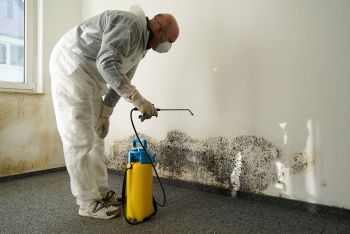
I have concluded that mold and “mold load” in homes is getting worse, not better. Over the past 40 years, we have made some significant changes, that have negatively affected our home's indoor air quality. Here are a few reasons for the increase in mold exposure to all of us.
1. Homes can't breathe: In a cold climate during the heating season, moisture vapor inside a building is driven outward into exterior walls. When it reaches a surface that’s below the dew point, the vapor condenses into a liquid. That surface is typically the backside of the exterior sheathing. Rigid foam board, particularly the foil-faced kind, creates a vapor impermeable barrier, so the wall cannot quickly or fully dry out.
2. Changed the way we build homes: We are using less and less real lumber: We have exchanged real lumber for manufactured particleboard, and pressed wood. Particleboard is a widely used material in the building industry. It is created by placing wood chips, fibers, or even small scraps of wood under intense pressure with adhesives and chemicals. Cost is the overriding factor and the main reason builders choose particleboard over any other building material. It is a fraction of the cost of lumber. When building large projects that require hundreds of sheets of material, or even when you use it for small projects such as flooring in a bathroom, particleboard can save you money. Saving a substantial amount on particleboard seems wise, however, do so with caution. One disadvantage is that particleboard will absorb moisture, causing it to swell. This can be a problem if excessive water is spilled on linoleum, carpet, hardwood, or anywhere that particleboard is used as a floor underlay. When using particleboard for flooring, moisture barriers must be placed inside the foundation to prevent moisture from swelling the particleboard.
If a leak or flood occurs and affects particleboard, the dry out time is up to 5 times longer than traditional lumber. Additionally, if mold begins to grow on the particleboard, there is always a concern of the potentially toxic mycotoxins (mold toxins) being omitted from the “broken down” adhesives and other chemicals used in the manufacturing process. it becomes something of a mycotoxin cocktail.
In addition to this, we have exchanged traditional lath and plaster construction for sheetrock. I.e. sheetrock with paper all around it. A much better food source than traditional lath and plaster. An added benefit of the plaster is lime was added. With the ph of lime included in the mix, it became a natural fungicide. Lime plaster was also permeable and allowed for diffusion and evaporation of moisture.
3. It seems, homes are getting more and more complex rooflines:
When a portion of one part of a roof, delivers rainwater to another part of a roof, and then to a larger part of a roof, the accumulated water often gets diverted into “corners” in hopes that a miraculous rain gutter can handle the volume of water. It usually is a recipe for water getting into places that it should not be. In addition to this, when a roofline abuts into a wall, the flashing is not sufficient to keep water from wicking into the wall. Once the wall is saturated, the water will find its way inside the home. I am constantly amazed at absolutely beautiful homes being built, and very little attention is paid to the drainage. This includes problems from the rooflines to the rain gutter, to the ground. Additionally, if there are low spots where the water can flow into the foundation, it is only a matter of time before water intrusion into the basement or crawl space.
4. We are building bigger homes: Bigger homes, bigger problems. Or at least more problems. I recently treated a home that had 14 sinks, 4 bathtubs/showers, 6 toilets, two kitchen sinks, two dishwashers, two refrigerators with water supplied to them, two washing machines, and 4 outdoor hoses connections. This increases the odds of having leaks and floods. Along with this, multiple HVAC units in a home. Times, at least in our home State, these larger homes are often used as vacation homes and are not occupied year-round. The lack of attention, the decreased year-round occupancy, less heating, less cooling, and less ventilation, often results in mold growth.
5. EMFs and Specifically 5G Electromagnetic Frequencies; Several studies have found that low-level EMF exposures of the type found in many homes induce mold growth. Similar research done at Chernobyl found ionizing radiation encourages mold growth.
Jeremy Evans
Manager at Pure Maintenance
jeremy@puremaintenance.com
801-540-2322